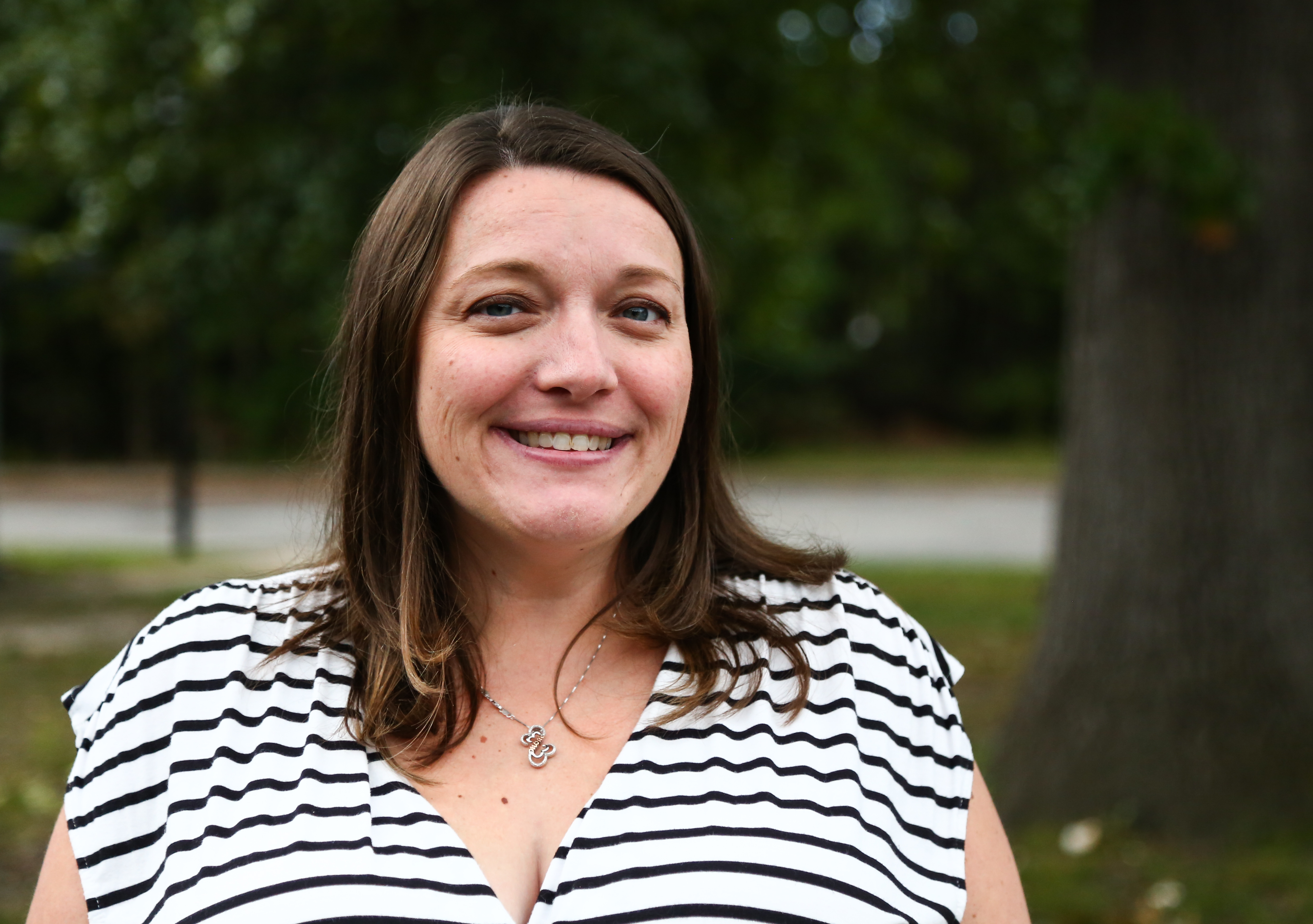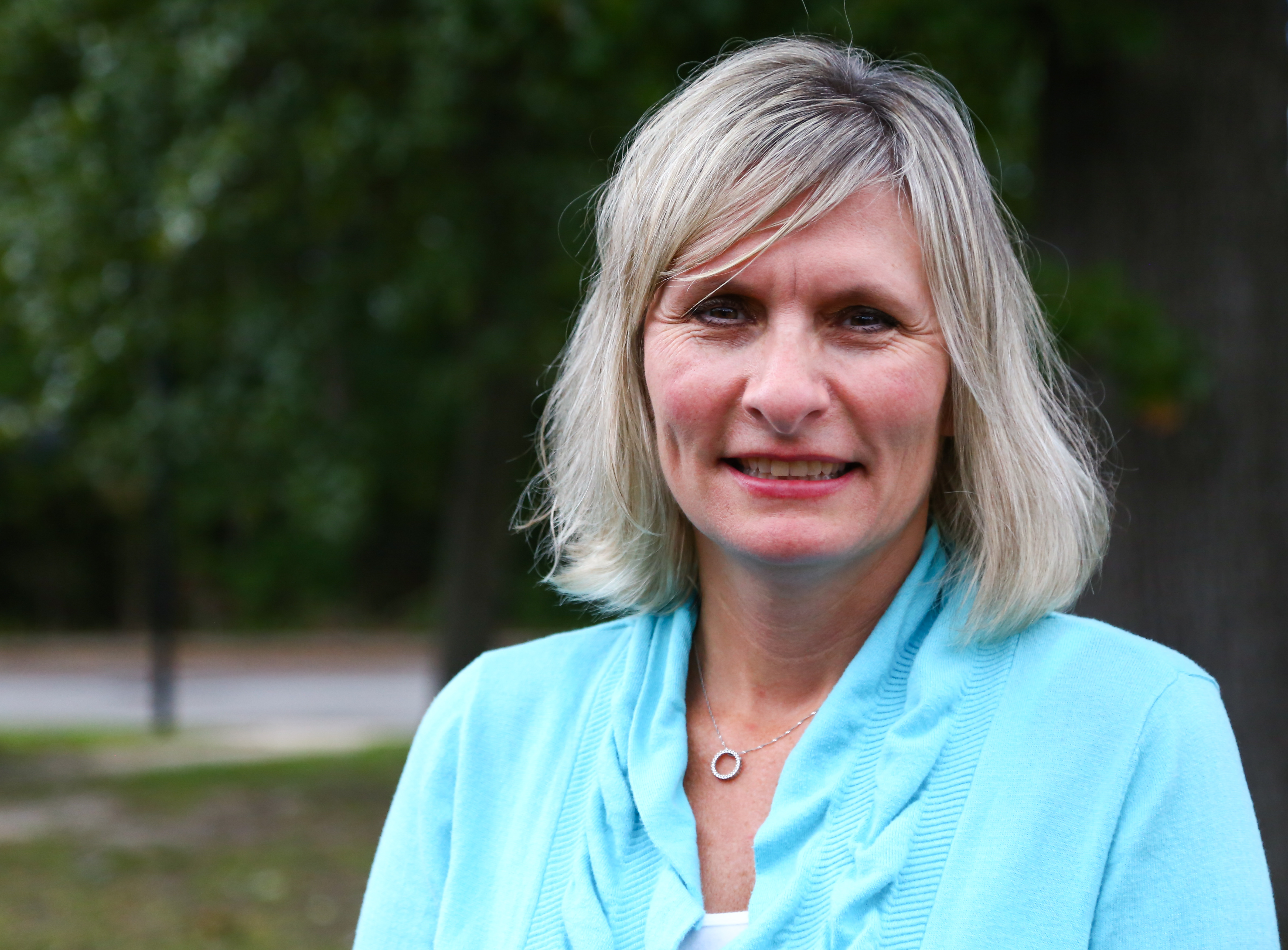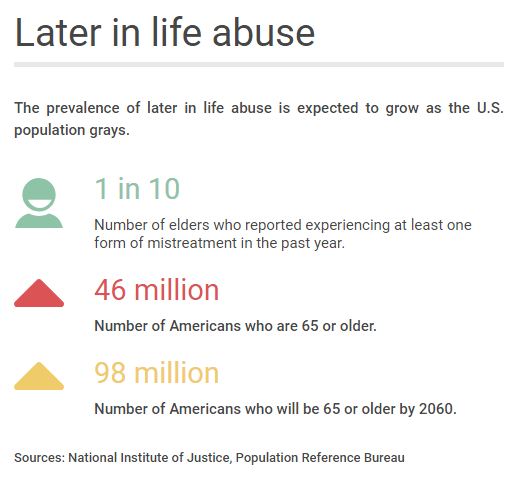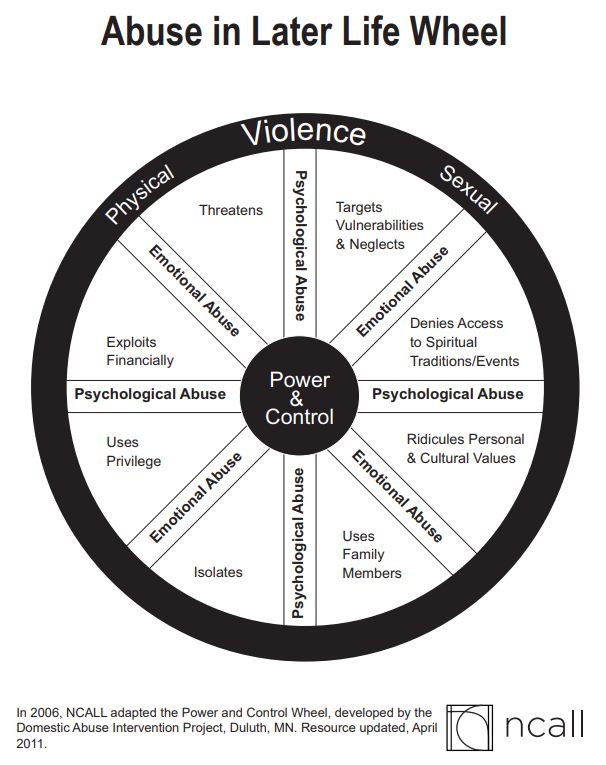Domestic abuse of older adults, already underreported, is expected to rise
About five million older Americans a year endure abuse, often at the hands of a relative, according to federal estimates. Yet experts say the elder abuse epidemic is even worse than statistics suggest, because most older adults don’t report their victimization.
That’s why Catholic Charities, Diocese of Trenton’s Providence House-Domestic Violence Services created a Later in Life Abuse program. The program, which serves people who are 50 and older, is located in Ocean County, because so many seniors spend their golden years down the shore.
During this Domestic Violence Awareness Month, we talked with Lisa Darling, the program’s coordinator, and Jennifer Bauer, community affairs manager, about this surprisingly common problem and what you can do about it.
 A vulnerable population
A vulnerable population
Q: What is “later in life abuse”?
Darling (pictured, left): It is physical abuse, emotional abuse, financial abuse, sexual abuse, and neglect. And when we talk about neglect, we’re not talking about self-neglect. We’re talking about someone’s caretaker who is not taking care of them.
We define “later in life” as people who are 50 and older. We have found a gap in services for people who are 50 to 65, who may not have children dependent on them but aren’t yet old enough to qualify for services through the Office of Senior Services, Older Americans Act, Medicare, or programs intended for much older people. We work with people 50 and older so we can bridge that gap.
Victims, in order to be eligible for Providence House and not Adult Protective Services of Ocean County, have to have a sound-enough mind to make their own decisions and understand the repercussions. If the victim is cognitively impaired, that would be Adult Protective Services.
Q: Is there a typical case for later in life abuse?
Bauer: Often, the abuser is the adult child who has maybe fallen on hard times and moved back into the home. Maybe they’re addicted to drugs. Lots of times, they’re financially abusing their parent. In these cases, the victim is widowed or divorced or otherwise alone, so the abuser is their only living relative. That can discourage the victim from reporting the abuse to police or obtaining a restraining order.
Darling: These cases often start out as financial abuse. When the victim discovers the financial abuse and tries to end it, verbal and physical abuse can follow.
An invisible epidemic
Q: How common is it?
Darling: According to the National Coalition against Domestic Violence, approximately 4 million older Americans are victims of domestic violence every year. But it’s hard to get a really good number because older folks aren’t always so quick to report the abuse that’s happening, or even recognize the abuse that’s happening. Experts say one out of every 24 cases is reported, but I think the number of unreported cases is even higher.
Q: Why is it so underreported?
Darling: Because of the dynamic of the relationship and who the abuser is. It might be the victim’s adult child, so the victim doesn’t necessarily want to report their child and get that child in trouble. Victims also are less likely to report if their abuser is their caretaker – because then who would take care of them?
And it’s also a different generation. They grew up with the philosophy “you made your bed, now you have to lie in it.” They didn’t have domestic violence services available when they got married decades ago. And it just wasn’t as acceptable to talk about it. Domestic violence is more at the forefront now. More people are talking about it, and more services are available today.
And last, victims sometimes don’t realize they’re being abused, especially if they’re not being physically abused. They think: “If somebody’s not hitting me, I’m not being abused.” And that’s not the case at all.
Q: So is this an invisible epidemic?
Darling: Generally when people think of domestic violence, they think of a woman with a bruise on her, and a little child at her side. The fact of the matter is this happens more commonly in older adults than people realize. It’s just really difficult to pinpoint how much, because it’s so underreported for various reasons.
Why Ocean County
Q: Why is this program located in Ocean County?
Darling: Our population of older folks is very, very high, so it just makes sense that this program would be here in Ocean County instead of any other county. According to the 2010 census, 27.2 percent of our total county population is over the age of 60. That’s 157,064 people. And there are over 92 adult communities here in Ocean County. We are second in 85-plus population only to Dade County, Florida, on the eastern seaboard. And in the past 20 years, our 85-plus population has more than doubled. So I do see this becoming more of an issue here, just because of trends in our county population.
Q: How did it get started?
Darling: It started as Project Reach in 1998, with a grant from the State Office of Victim Witness Advocacy through the federal Office on Violence Against Women. In 2002, we received a grant from the Ocean County Office of Senior Services to focus on the 60-plus population. Currently, we still receive that funding, as well as funding through the OVW to work with 50-plus clients. We are now funded through June 2019.
Restoring stability
Q: How do you help older adults overcome abuse?
Bauer (pictured, right): We have individual and group counseling. We provide intensive case management and help with whatever outside needs they have. We do safety planning and domestic violence education, and we have support groups for people who are 50 or older. We also can accompany them to court, so if someone is going for a restraining order, we will be there as their support system.
Everything is free and confidential. We also offer services off-site to reach the southern and northern ends of the county. Our main office is in Whiting, but we have office space at the Beat Center in Silverton, with office hours on Wednesdays. And we have office hours by appointment in the Southern Ocean Resource Center in Manahawkin.
Darling: We’re also able to help them financially in some capacity, whether that’s paying a month of rent to get them out of their house and on their feet again, providing taxi transportation for services, helping to buy groceries or pay utilities until the client is stable again. And we have a safe house, which has a handicapped-accessible room for residents with mobility issues. We refer to other services in the community, including in our own agency. For example, we link people with our Fix-It program, which does seasonal chores and minor home repairs for seniors 60 and older for free.
Preconceived notions
Q: How many people are served?
Darling: In 2017, we had contact with 204 people. That may be people who we helped through court or who called the hotline. Of those, 73 became new clients who attended our counseling and group sessions or stayed in our safe house.
Q: How is this program unique?
Darling: We’re the only domestic violence agency in Ocean County. We also train law enforcement and victim service providers on signs of abuse, ways to respond, and ways to work with other agencies to make sure the victim gets the best and most effective help they can get. Law enforcement and victim service providers who don’t have that training can sometimes come into situations with preconceived notions. For example, if a victim can’t fully or consistently verbalize their experience or even tell you what they had for dinner last night, the officer or provider might think: ‘This person is older, so they must have dementia.’ The training helps hammer home that idea that they just can’t blindly believe what the offender says.
How to help
Q: What are some signs that an older person is being abused?
Darling: Any general changes in someone’s behavior – for example, someone who was outspoken but now seems withdrawn, or someone who has always been able to pay their bills but now things are falling by the wayside. Or if you hear yelling late at night or see bruising on the older person. These signs don’t necessarily mean domestic violence, but they warrant concern. It’s really important that we do check in on our older relatives and neighbors often.
Bauer: Isolation is another sign. Abusers tend to isolate their victims from family and friends.
Q: How can older adults protect themselves?
Darling: No matter who you are or what age you are, everyone’s safety plan will look a little different because of their circumstances. But when older adults are involved, when they leave the abusive environment, they should bring their medications with them and give copies of their financial documents to someone they trust.
Q: Any parting message to older adults – or their loved ones?
Darling: If there are any question or concerns, whether you think it’s domestic violence or not, call our hotline at (732) 244-8259 or toll free at (800) 246-8910. We have someone there 24/7 who is more than happy to answer any questions – or give a caller referrals for organizations that can help them, if it’s not us. They don’t have to live like that.
Further reading
The National Clearinghouse on Abuse in Later Life offers strategies for supporting older victims here.
To subscribe to our blog posts and news releases, fill out the fields below.


